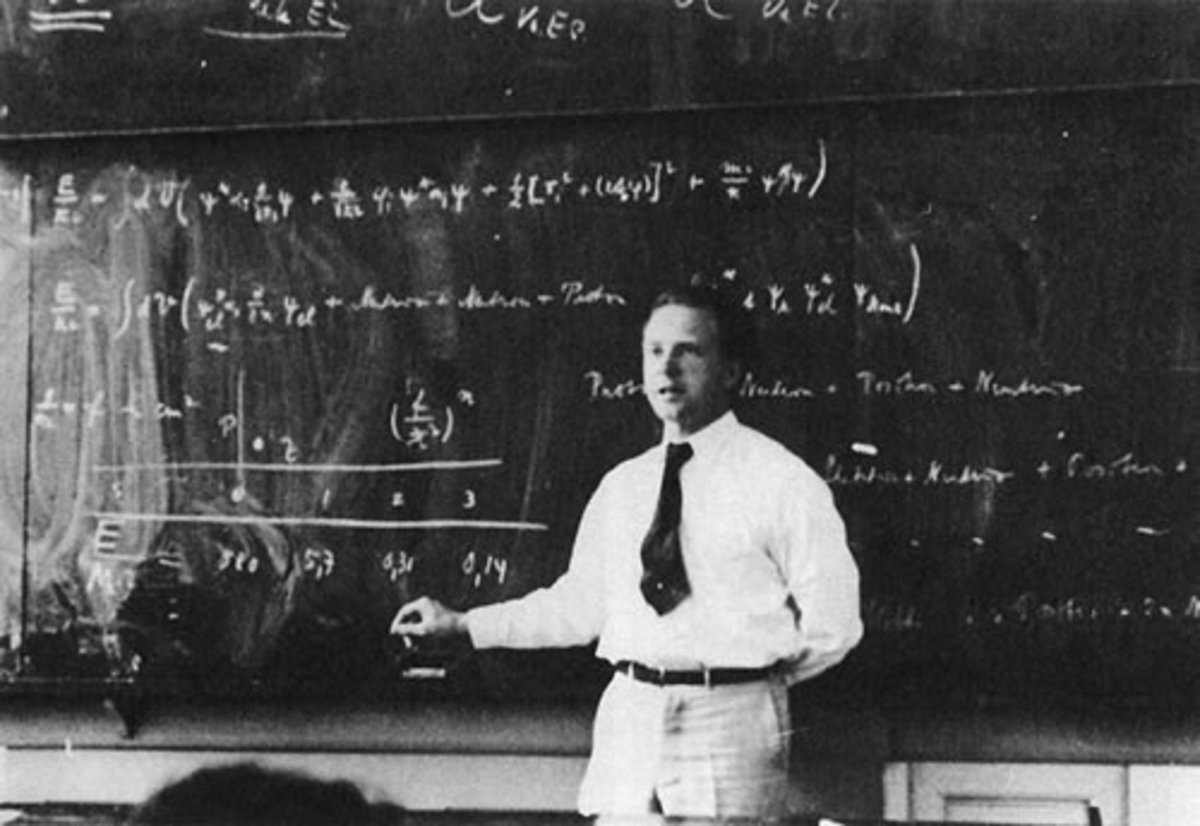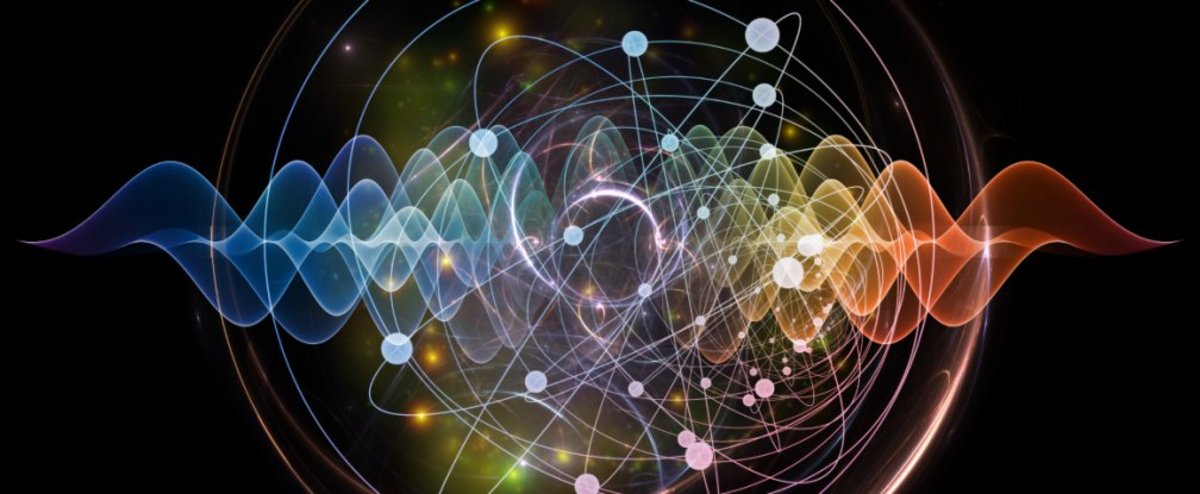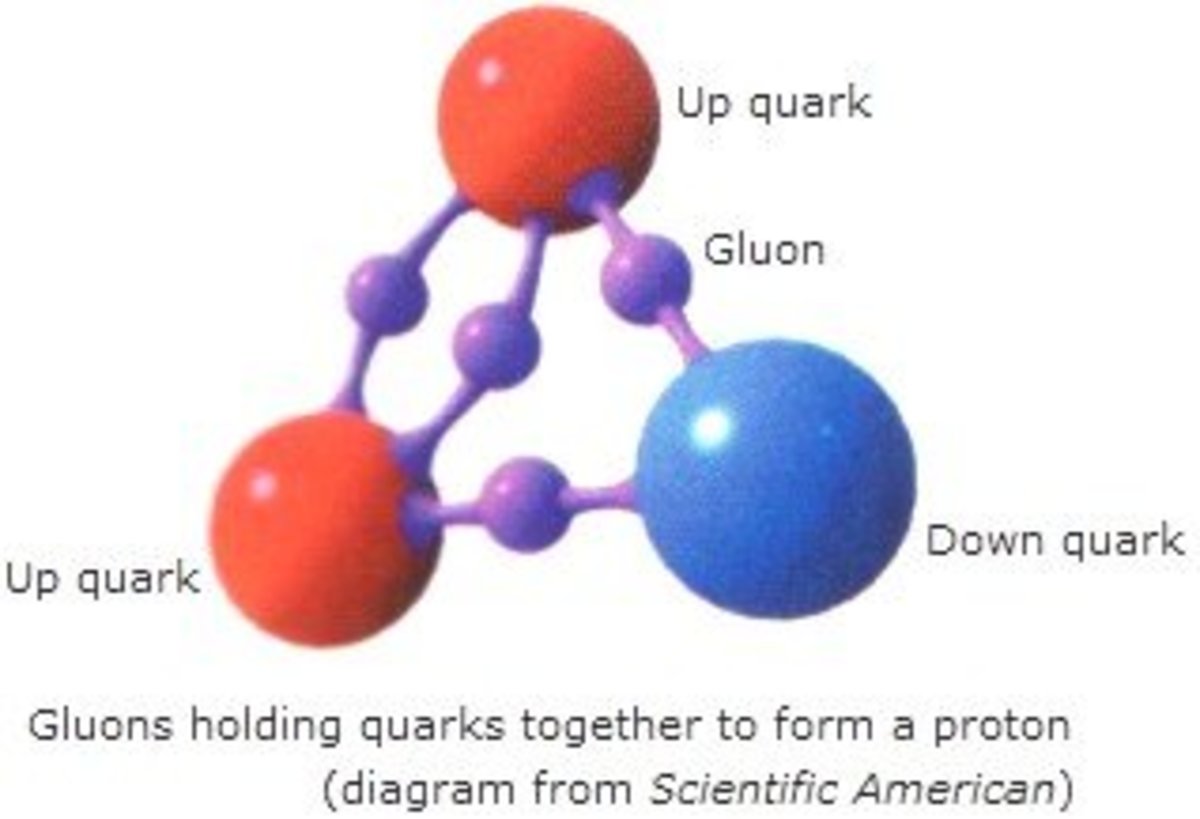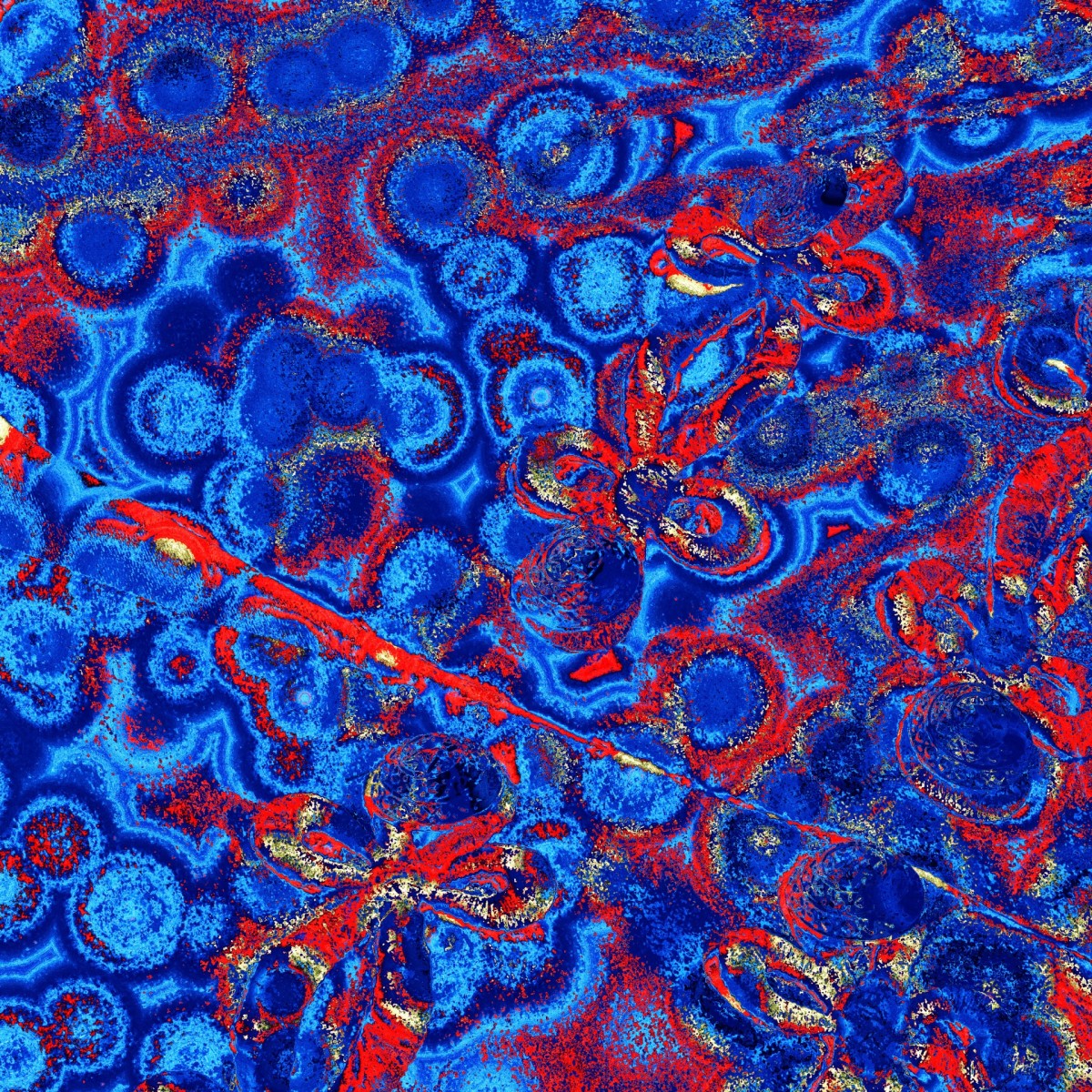Entanglement, Missing Mass, Interference and Individuality
The cosmos behaves in an entangled and in a quantized individualistic state
The well known double slit experiment and single photon interference is something that most practicing and aspiring physicists are aware of. It presents one of the most puzzling aspects of the particle wave duality of the cosmos. Recent experiments have shown that electrons, neutrons, whole atoms and more can behave in the same manner as photons of light when passed through double slits one at a time. In all cases, there is every indication of "self interference" that is characteristic of what we perceive as wave interference patterns. This "self-interference" is an important consideration in the idea of entanglement, otherwise known as the non-local reality. "Self-interference" can help to explain why some mass is missing in the cosmos, but it is not the whole answer. Yet, a curious co-existence between entangled states and non-entangled state appears to be the reality in the cosmos, when we look at the foundation of it in the quantum level. Whereas entangled states represent the unity in the cosmos, non-entanglement allows for individuality and apparent separateness and duality. Entanglement is the apparent means by which Extra Sensory Perception (ESP) like information is instantaneously channeled and non-entangled states gives each one of us the sense of separate identity and the idea that intuition is nothing more than a flight of fancy. The non-entangled state is the realm of chance and uncertainty and on the human personal level, the sense of ego identity. This combination places us in a position where the cosmos can look strange indeed, from time to time. One can suggest that one state represents objective reality and the other subjective reality.
By the mere act of observarion,we change things radically.
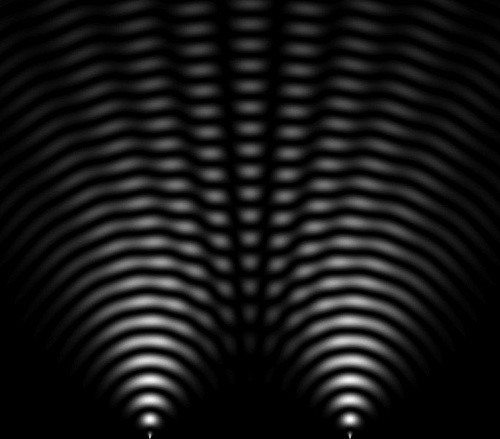
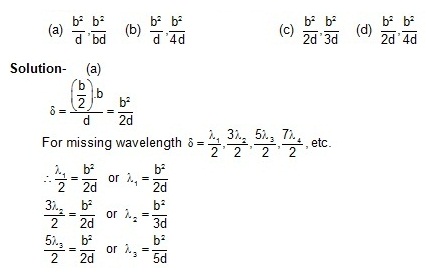
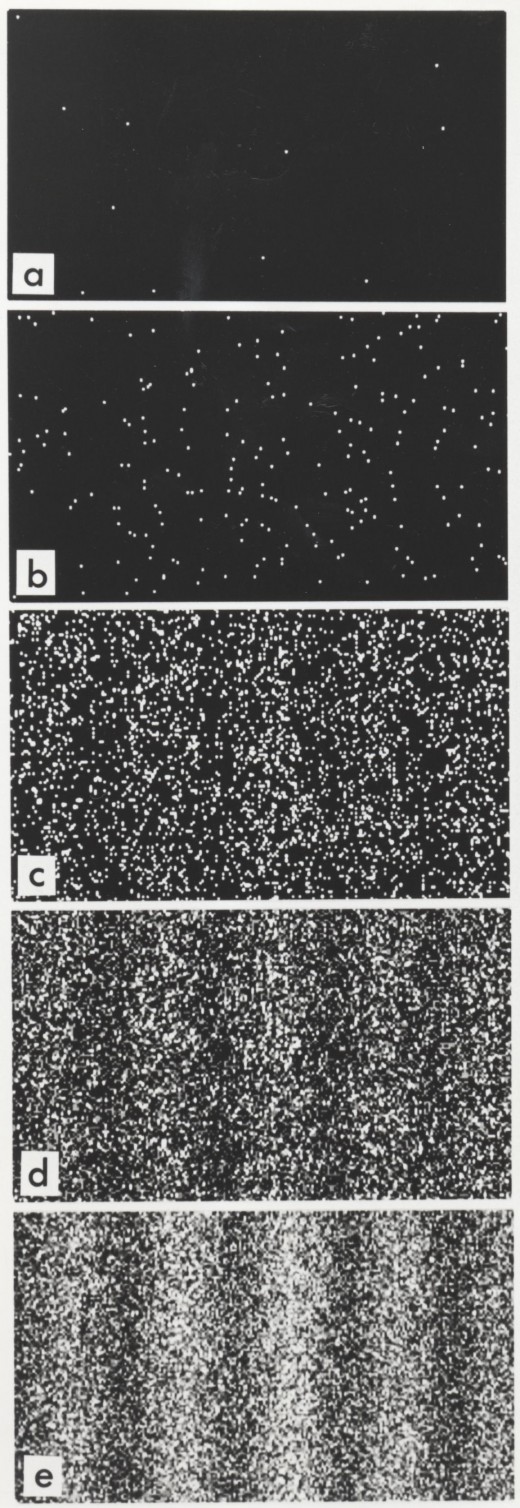
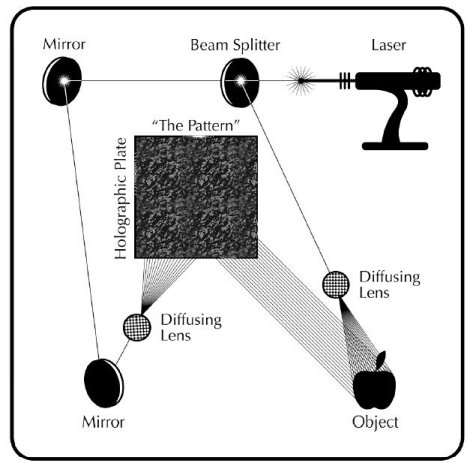
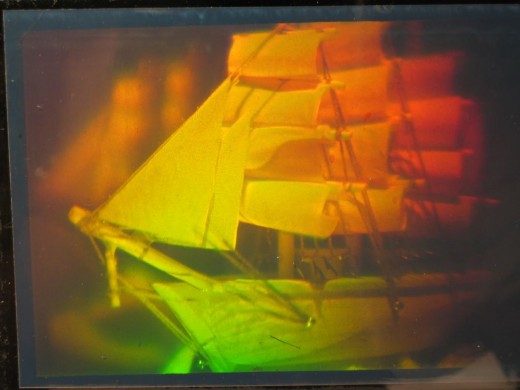
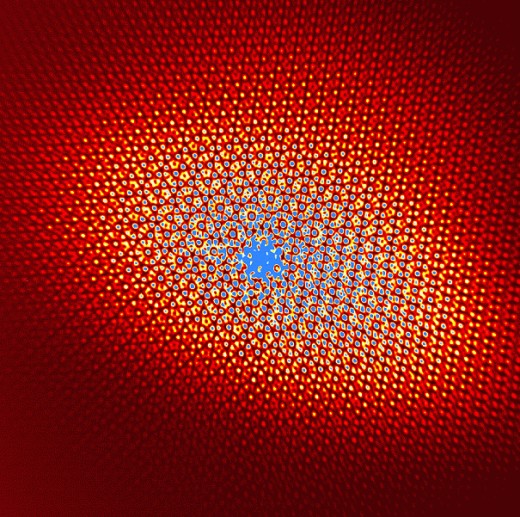
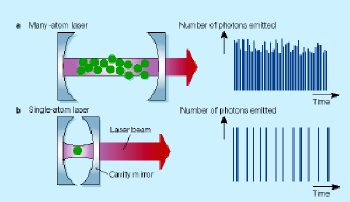
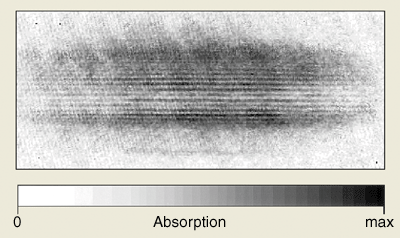
The wave-particle duality
What we can determine from this is that the nature of the wave particle duality points to a different reality of the cosmos than is currently described by either the particle or the wave schools of thinking. Quantum physics has determined that the idea of the wave function in potential exists until something causes the wave function to collapse. This collapse is caused by measurement that will give us information on either momentum or position. Uncertainty creeps into the picture because when we measure; we change that being measured, so in reality, we are measuring the instantaneous moment of change; the so called Delta-p and Delta-q of position versus momentum. The states before and after the measuring are unknown to us and are thus called the non-collapsed wave function, which exists in a probabilistic state. Interference patterns generated by single "entities" demonstrate a probability wave function that statistically shows a 50/50 distribution of existence/non-existence created by "self-interference." Just as in other areas of physics, such as water or rope wave destructive interference, neither the medium nor the energy is lost. This merely cancels out momentarily until the opposing waves pass though one another and emerge intact on the other side. In standing wave patterns, destructive interference can be made to "stand still." The standing wave interference can be seen in two synchronous sources of vibration that induce waves in the air or water. Distinct regions or lines of destructive interference, called nodal cones or lines can be clearly heard or seen. Double slit experiments can be set up for a number of media beyond just photons or atoms. One can set up "slit" experiments for sound and water waves and produce patterns very much like the "self-interference" of photons or atoms.
We know that mass has a vector quantity from other observations and experiments and that mass is entangled with quantum gravity and virtual to real to virtual manifestations. The fact of "self-interference" from these experiments suggests that at any moment, defined by Planck time as 10-43 sec. half of the cosmos for all intents and purpose is canceled out and invisible to the senses, no matter how measured. Half of the visible mass of which we are so familiar is undetectable, except of course by the part that we can see and measure. This "dark" half may be part of the so-called dark matter that is theorized in contemporary cosmology. Of course, the same theory gives a much higher percentile for the dark part of mass and energy. The missing part not described here must then be partly made up of virtual particles and photons. The part that we see and inhabit is only a small percent of the cosmos and this part can behave weirdly enough.
Self-interference has some important ramifications for existence and possibilities. Since atoms have been found to be self-interfering and that we are in essence a huge agglomeration of atoms, it is entirely possible to produce and experience weird effects on our level that are out of the realm of ordinary experience. Anton Zeilinger et al produced interference patterns first with neutrons in 1991, the moved on to atoms in 1996. Then they went a step further, producing interference patterns with a group of atoms called a Buckyball, which is group of 60 to 70 atoms arranged like a geodesic dome. In each case, an interference pattern emerged in the double slit experiment, proving a major quantum principle of the superposition of states. At this rate of scaling up, it is only a matter of time to scale this effect up to something we can directly feel and touch, like a brick or a person. The superposition of states is the condition that quantum entities exist in being in more than one condition simultaneously until a wave function collapse is induced by measurement. The classic thought experiment in this line is the now famous Schrödinger’s cat thought experiment. Modern writers now deal with Schrödinger’s kittens.
At some point, using this quantum effect, we may well be able to teleport, induce invisibility, and project seeming solid objects through each other. We may also be able to explore regions of the cosmos now out of reach, like the interior of the Sun or inside an event horizon. There is a reported experiment called the Philadelphia Experiment that can be neither confirmed nor denied as far as the author is concerned. Yet, the implications of the experiment and the descriptions thereof, suggest that some of the foregoing has already been accomplished by the US military in the 1940’s. The reported results of the invisibility experiment went far beyond expectations and scared the Navy into abandoning the whole project. We are left with a lot of story and myth spinning in books and movies.
The idea of "self interference" has one more interesting aspect and that is the relationship to holographic projection, which is also produced by interference patterns on a large scale that is now only dreamed of for solid reality. There is one difference insofar as the hologram dispenses with the slits altogether, using instead the coherent light of a split laser beam, which illuminates an object on one path and the other is a reference beam that illuminates nothing. The two beams and single surface is somewhat the reverse of the double slits used to create self-interference. When the two laser beams come together on a surface, much like the surface that gathers single photons in a double slit experiment, a complex interference pattern is created that when viewed, gives the illusion of a three dimensional object. Teleportation will likely use lasers and double slits in combination and in tandem with computers to produce the desired self-interference needed to produce a quantum based replica of the object/person being teleported. It is not true teleportation per se as that would need the removal by some kind of quantum deconstruction of the subject and transporting that to the location of the interference destination to be reconstructed thereat. Between both start and end, the subject would exist in a superposition of states.
The laser of choice is the atom laser, which can be constructed using an atomic Bose-Einstein condensate. When atoms are cooled to near absolute zero, they lose their individuality and become a super fluid. The cold temperatures here are so close to absolute zero that the difference is vanishingly small. Such temperatures are reached using traditional lasers. In this state they behave more like light and can thus be used in a laser and transmitted like coherent light and split to create a holographic interference pattern. Atom lasers have the quality that the beam of the Bose-Einstein condensate will self-interfere just as single photons do. The first successful atom laser was constructed in 1997 and improved in 2002. Immediate uses are for microscopes that can examine reality on the atomic and molecular level with a clarity that has been impossible up to now. We will be able to "see" quantum processes with such a laser. A direct view of DNA and active chemistry is feasible among other things.
Entanglement was first conceived in theory and then observed with carefully constructed experiments by A. Aspect and Gisen later on. The basic idea was to split a pion into two polarized photons moving in opposite directions. The momentum of one was measured while the position of the other was taken. It was found that whatever happened to one photon was instantaneously reflected on the other, no matter how far apart they were. This simultaneous measure of momentum and position is a violation of the uncertainty principle and Einstein’s concept of relativistic limits. It demonstrates that there is instantaneous connection between seemingly separate entities, no matter how far apart. Yet there are aspects to the quantum realm that are not entangled, and the uncertainty principle and relativity still hold. It appears that the two types of phenomenon coexist in the cosmos at large. At the heart of things, as seen by the experiments described above, is self-entanglement, as well as entanglement of apparently separate entities. However, there are aspects to the quantum world and cosmos at large that are definitely not entangled. We live in a curious mix of entangled states and quantum uncertainty. Under relativistic conditions, where there is time dilation and Fitzgerald contraction, then of course there is a type of entanglement. How entangled and non-entangled states can co-exist is a matter of deep thought and more investigation. Yet the evidence is there. Both conditions exist in order to have instantaneous communication and individualization. This is a deep mystery indeed.
The question may be accounted for by incorporating the virtual particle, false vacuum and real vacuum conditions of the cosmos. This is best described using matrix mathematics incorporating complex numbers. Just as a matter of a refresher, complex numbers involve both real and imaginary numbers. Real numbers are what we measure and count with on a day to day basis when we lay out a building or shop for goods. Imaginary numbers are based on the square root of –1. In matrix calculations, there is no such thing as the commutative property that we take for granted in some operations with real numbers. As an example, 3 + 7 equals 7 + 3, or 3 X 7 equals 7 X 3. In the multiplication, both result in 21 as the product. In the addition, the result is 10 for both operations. Commutative properties do not exist for division or subtraction. In matrix mathematics, this is not necessarily so for any operation with numbers. When we involve imaginary numbers, the result is definitely not so. The matrix mathematics for multiplication for example involves what is called the cross product and ordinary multiplication is now defined as the dot product. By using complex matrix analysis, it becomes apparent that this is a good model for virtual and real particle interaction and also for defining the feedback between the Planck false vacuum state and the real vacuum. The matrix relationship between the two states results in the complex individualization that we see in the local sense of cosmology, while at the same time allowing for a non-local, or the entangled state. Once more, we see a comparison with the analog of the hologram and how the illusion of 3D is created, using an active laser beam and reference laser beam. Used in conjunction they create interference patterns when they interact with one another on a 2 D film plate. By dividing the holographic image, we end up with two complete 3D images of the same scene instead of one divided image with half on each piece like in a regular photograph. This division can be done repeatedly, and the 3D scene in its entirety is duplicated. However, with each division, the quality is degraded. The repeated scene in each piece is similar to entanglement in concept, while the degraded quality is like quantum non-entanglement especially when the image is so divided, that all sense of self-similar information is lost completely. This loss would be complete when the original hologram is reduced to individual atoms. Here atomic individuality would take over. Entangled and non-entangled quantum states co-exist in a similar fashion, embedded in one another.
There is one idea to consider in all of this and that is the concept of a relativistic framework. In General Relativity we are told that everything hinges upon frames of reference. The recent explorations into quantum gravity and quantum relativity are exploring the idea of a non-framework dependent cosmos. One problem with framework dependence is that the results of calculation all too often look too perfect. The real world and cosmos is filled with examples of other than perfect manifestation. There are examples of fractal emulating natural structures like cratering, coastlines and ferns, and there are more examples where there are differences between fractal creations and natural structures, like dendritic structures, Feigenbaum recursion, etc. Yet the similarities are close. Then there are fractal creations that have no counterpart in the real cosmos. In the real world, we must necessarily include turbulence and perturbation in the picture. A mathematical analysis of harmonic and dissonant zones in the solar system between planetary orbital periods will give us clarity about the fate of individual bodies. The real picture looks nothing like the mathematical plot, because there are factors like orbital inclination and elongation of individual orbits to consider. The result is that from a distance, a planetary disk will appear rather smooth, except in the vicinity of major planets. Yet, calculating the individual orbital periods, we can find the patterns of orbital dissonance and resonance and base predictions based on that. These patterns reflect the numbers in the orbital period fractal set, but the appearance of a real accretion disk is different from the circular patterns generated by the number sets for orbital period relations. We begin to see the difference between the ideal of numbers and the real manifestation. It is this difference that suggests a non-framework dependent cosmos. What is needed to fill the gap is a non framework dependent mathematics.
The cosmos was born out of an initial fireball that set the initial differentials so necessary for the evolution of all following complex processes. In addition, the ongoing feedback between the virtual and manifest conditions of the cosmos keeps the whole process in a constant flux of change. This change incorporates ever increasing orders of complexity until we arrive at you and me, who are intimately connected in the entangled sense, but have a strong sense of individuality and separateness in our day to day lives. Where astrology enters the picture is insofar as the entanglement of states of all physical and energetic entities in the cosmos upon all others. In other words, there is a distinct connection between all the planets, their energies and positions upon each and every one of us in a unique way. Each unique combination also contributes to each of our unique characteristics. When the planetary relationships change, so do individuals born in that cosmic environment, differ from others who were born in a different cosmic environment. Hence individuality arises through the change in planetary relationships. Stated in more traditional terms, timing is important in the analysis of an individual from the planetary perspective. It is this in the local sense that gives us the feeling and appearance of separateness, so necessary in the complex evolution of states. The arguments and tenets of astrology have a basis in fact in the entangled and non-entangled states of the quantum.
The mystery of individualization in the cosmos that is also entangled at the fundamental level, does not however, address the question of individual consciousness. From the point of quantum individualization in the non-entangled state, we must then take another step to describe how individual consciousness arises out of the primordial complex quantum matrix. What can be said at this point is that consciousness, like anything else in the cosmos, arises from the quantum. This must by implication, suggest that the fundamental units that build and change the cosmos on a continual basis, are conscious. That consciousness can only exist where observation can occur with something else. Here we have a type of quantum relativity insofar as that one thing can only be described in terms of something else. To have consciousness, a sense of separateness in the non-entangled state must exist as a precondition. Therefore, in the entangled state, there also exists a kind of collective conscious (some would say collective unconscious), which acts as a kind of reference for the rest. This then describes why things can get downright weird. This is especially true under extreme conditions.

